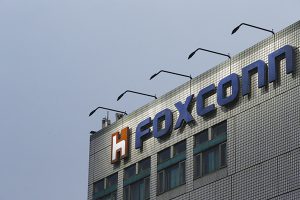Consider, if you will, a scenario where Foxconn Technology Group enjoys margins three times fatter than Apple Inc. That may be hard to imagine because the developer of iPhones is one of the largest companies in the world, earning close to $100 billion annually, while the one that makes those devices brings in 5% of that.
But this was once the case. The year was 1996, and Hon Hai Precision Industry Co — Foxconn’s flagship — posted a gross margin of 31% while Apple delivered just 9.8%. It was a historic low for the Cupertino company, during Steve Jobs’s hiatus from the business he founded.
It was also a record high for the Taiwanese electronics manufacturer. The roles have since switched and last year they posted figures of 42% and 6%, respectively.
Yet Foxconn has a plan to reverse its margin decline by going back to the core business that Terry Gou started almost 50 years ago, one that preceded the iPod and iPhone and was driven by a boom in computers, early games consoles and even dot-matrix printers. If Gou’s successor, current Chairman Young Liu, is right then today’s electric vehicles might be akin to the PCs of the 1990s — and could become a catalyst for levels of profitability not seen in 20 years.
In the mid-1990s, personal computer uptake was booming with consumers, schools and businesses rushing to install those beige metal boxes on their desks. Companies like Compaq Computer Corp and Dell Computer Corp were growing fast and the internet was in its nascent phase. Gou found his niche early on, developing and churning out the myriad small components that connect all the parts of a computer — hence the name Foxconn. While these little pieces of technology had low price tags, clients bought them by the bucket and Foxconn could charge huge markups.
Large-scale assembly of electronic gadgets didn’t come until the turn of the century when Jobs, and his lieutenant Tim Cook, needed someone to manufacture their hit new iPod at massive scale and with a fast turnaround. Soon, Foxconn’s factory in Shenzhen southern China was dubbed iPod city, and would later become the global hub of iPhone assembly. Despite hiring up to a million workers to slot together all the parts of a smartphone, Foxconn’s device-assembly business isn’t all that profitable and has razor-thin margins. Instead, the company makes better money from manufacturing or procuring parts that go inside, and charging clients a premium over the cost.
—Bloomberg
 The Gulf Time Newspaper One of the finest business newspapers in the UAE brought to you by our professional writers and editors.
The Gulf Time Newspaper One of the finest business newspapers in the UAE brought to you by our professional writers and editors.
